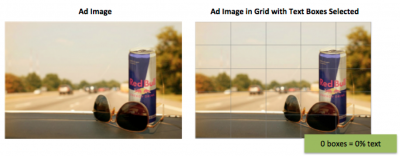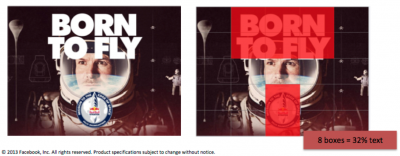JoomConnect Blog
Boosting Facebook Posts, Part 2: Boosting Posts with Images that Meet Facebook’s Guidelines
This month, we look at meeting Facebook’s boosting guidelines so your images and content get seen by the masses.
Be Mindful of the 20% Text Rule
Facebook puts limitations on images that can be boosted. In an effort to keep advertisements from being overly distracting, Facebook has mandated that a boosted image can’t contain more than 20 percent text. Additionally, there are guidelines regarding tastefulness, which a business concerned about professionalism shouldn’t have to worry about.


The 20 percent-text rule can be tricky to work with and will require you to plan ahead. For example, if you know ahead of time that you will boost a particular image, then edit the image to meet Facebook’s guidelines before you post it (instead of having your campaign cut short due to Facebook determining that your image doesn’t qualify).
But Don’t Limit Every Website Picture and Facebook Image to 20% Text
Remember, you’re not limited to only posting images with less than 20 percent text. Instead, this limitation only applies to posts that you boost, which is why it’s important that you know ahead of time if you’re going to boost a post or not. Therefore, don’t feel obligated to have every image on your website, or every image on your Facebook page, to have less than 20 percent text.
What if I Want to Boost a Post that Doesn’t Meet Facebook’s Guidelines?
If you’ve posted a blog article on Facebook that uses a picture with more than 20 percent text, and you decide afterwards that you want to boost it, you still have the ability to boost the desired content. One option is to simply create a new post using the same blog URL, and then upload a separate image that’s Facebook-qualified to the new post. Having a separate Facebook-optimized image on standby is a valid strategy that allows you to still use text-filled images on your website’s blog article, while not having to worry about getting penalized by Facebook.
However, keep in mind that creating a separate post like this will give your timeline two posts featuring the same content. If you’re uncomfortable with having duplicate posts on your page, then you can remedy this by deleting the first post. Or, in order to retain any likes and interactions you may have garnered from your original post, keep the two posts and upload an image on your second post that looks different enough from your original image that a casual viewer wouldn’t notice.
Boosting your Facebook post is an effective marketing tool, so long as the boosted post is one of quality. Being intentional about creating a post, making sure that your image will comply with Facebook’s 20 percent rule, and giving your post a chance to gain organic popularity before deciding to boost it, will all help your boosting efforts to be a success.To learn more about our marketing best practices and how-to's, follow us on Facebook. Need someone to manage your social media presence? Check out our new Social Media service!




Comments